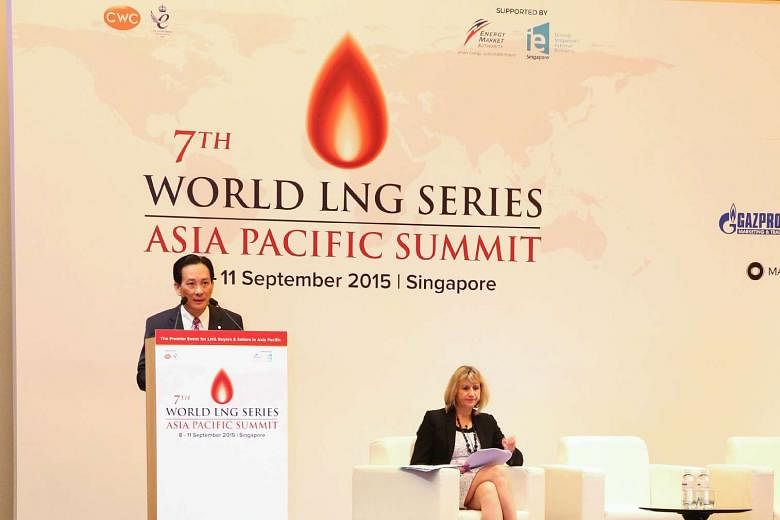Home-grown liquefied natural gas (LNG) player Pavilion Energy has set its sights on small-scale gas projects in South-east Asia.
The Temasek-owned unit is in discussions with several partners in the region, including those in Indonesia and the Philippines, said group chief executive Seah Moon Ming yesterday.
Mr Seah told the 7th LNG Asia- Pacific Summit that small-scale LNG solutions are becoming more prevalent, with 65 per cent of all contracts signed in the past five years alone marked for volumes below one million tonnes a year.
"Unlike the United States or Europe, South-east Asia has numerous small and remote islands, of which many are permanently inhabited and require power," he said.
"It makes sense to use small 10,000 cubic metre vessels, carrying about 0.05 to 0.5 million tonnes per annum of LNG, to perform multi-location deliveries." Such small-scale projects would be "positive news" for international suppliers, given that it is a cost-effective means of making natural gas available to energy users not connected to pipeline networks, he said.
"The concept (also)... operates in a different market segment from large-scale exporters. Such a trend lowers the barriers of entry to the LNG export market, allowing more competitive players to enter the market."
Mr Seah acknowledged that most players in the LNG industry are facing tough times in light of the oil price collapse since June.
"With most LNG contracts being oil-linked, the 50 per cent fall in oil prices led to lower (LNG) spot prices," he noted, adding that most buyers are less willing to commit to long-term, large volume purchases today. "With the limited demand growth for LNG, coupled with the increased supply of LNG, our LNG market today is clearly long."
But over the longer term, prospects for the industry remain positive, said Mr Seah, pointing to the growing appetite for LNG in Asia, especially with the rising rate of urbanisation and increasing peak power demand in both China and India. He similarly remains confident about the future of LNG bunkering in Singapore.
"Our strategic location in the Straits of Malacca and the South China Sea sees over 50 per cent of global LNG supplies passing through the proximity of Singapore - that's approximately 2,000 cargoes per year," said Mr Seah, adding that Pavilion Energy is working on an LNG bunkering trial and licence.
"While South-east Asia may be a busy maritime region, there is currently no LNG-fuelled ship in South-east Asia. In time to come, by having LNG bunkering services in Singapore, we will be able to act as a refuelling station for South-east Asia and promote both the use of international and regional LNG ships in Asia."


